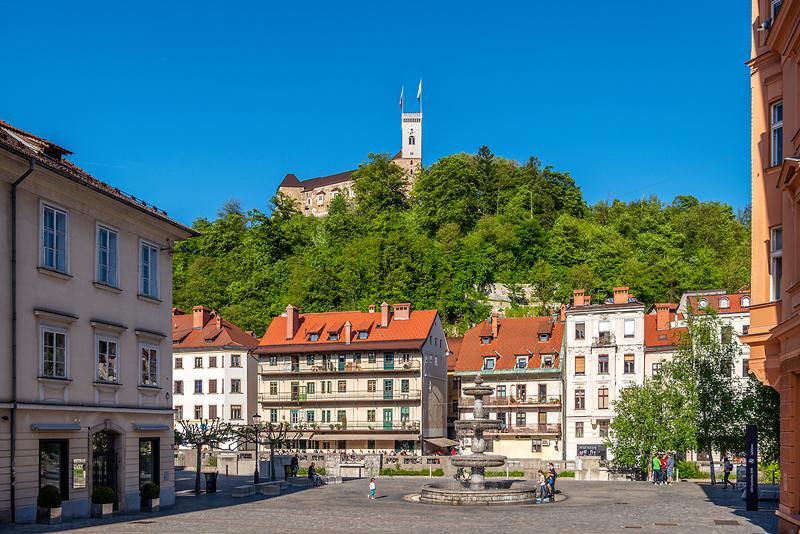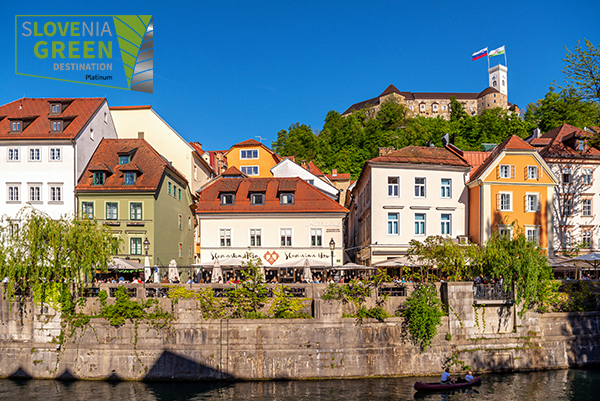A vibrant green city that combines the charm of a small capital with the confidence of large European metropolises. In Ljubljana and the region, people come first. Cars have long been absent from the city center, making room for more café and restaurant terraces, cultural events, leisurely shopping at various markets, bike lanes, and more. Green spaces intertwine with the urban environment, allowing you to quickly escape the hustle and bustle of the city to parks and small forests and get to know the wider region better. Whether you know Ljubljana well or visit it only occasionally, we invite you to discover it anew with the help of our tips.

Ljubljana is a “dragon” city. Ljubljana is vibrant. Ljubljana is green. Ljubljana is one of the best European cities for short breaks (city breaks). Ljubljana is an excellent culinary destination. Ljubljana is beautiful in all seasons. Ljubljana has numerous attractions, and its old town is charming. Ljubljana has a castle and the Triple Bridge over the green Ljubljanica River. Ljubljana has friendly people. Ljubljana is full of fun, games, and diverse events.
Ljubljana is the capital of Slovenia. Ljubljana is the soul and heart of Slovenia. Ljubljana is an excellent starting point for excursions around Slovenia. Ljubljana is a human-scale city. Ljubljana is a city of culture. Ljubljana is the city of architect Jože Plečnik. Ljubljana is boutique; it can easily be explored on foot or by bike. Ljubljana is a paradise for tourists. For this reason, let’s take a closer look at tourist Ljubljana.

Ljubljana Castle is undoubtedly the main attraction for visitors, but everything beneath it, from the old town to numerous museums and galleries, is more than worth exploring further. An exceptional combination of true delights, from Jože Plečnik’s architecture to the historical atmosphere of the old town to occasional hints of Yugoslav urban planning, all work in harmony to create this small and perfect city.
Renowned architect Jože Plečnik attempted to shape Ljubljana in the image of ancient Athens. Plečnik’s Ljubljana ranks among the most important artworks of the 20th century. Some of Plečnik’s best works include the National and University Library, the arrangement of the Ljubljanica riverbanks (Triple Bridge, Cobbler’s Bridge), the central city market, the Church of St. Michael in the marshes, the Križanke Summer Theatre, etc.

The Dragon Bridge is adorned with iconic dragon statues that have sparked the imagination since the bridge was built. During your visit to Ljubljana, you must take a photo next to a dragon. The Dragon Bridge was built at the turn of the 19th and 20th centuries and was the first true reinforced concrete structure in the city and one of the first and largest such bridges in Europe at the time.

The Central Market. People used to gather in the city at the market, and it was no different in Ljubljana. The Central Market is still considered a traditional meeting place for locals and visitors from across Slovenia and tourists. The Central Market includes an open-air market (on Vodnik Square and Pogačar Square), a covered market between the two squares, and Plečnik’s covered market along the Ljubljanica River. Besides the market, you will find numerous restaurants and street food kiosks.

At the City Museum of Ljubljana, you can view a permanent exhibition showcasing the development of Ljubljana from prehistoric times to the present day. The museum’s collection includes tens of thousands of items, among which the oldest wooden wheel in the world and a 40,000-year-old wooden arrow stand out.

The Cathedral (Church of St. Nicholas). The Cathedral of Ljubljana, the seat of the Ljubljana Archdiocese, is undoubtedly the most important Baroque church in Ljubljana. It stands on the site of a Romanesque basilica from the 13th century and was built in 1701 after the previous one was burned down by the Turks. It features exceptional wall paintings and other artistic heritage. The cathedral is adorned with numerous artworks that you must see.
The permanent collection of the National Gallery includes almost 600 works of Slovenian and European fine art. Particularly noteworthy are the outstanding works of Slovenian Impressionists, the popular Slovenian painter Ivana Kobilca, and the renowned modernist painter Zoran Mušič.
The Town Hall, Magistrat or Rotovž, is today the seat of the Municipality of Ljubljana. It was built in the 15th century and acquired its current appearance between 1717 and 1719.
The façade of the building reflects Venetian influence. The atrium still preserves a late Gothic plaque with the coat of arms, a remnant of the old building, and a statue of Hercules with a lion from the late 17th century, which once stood at the Hercules Fountain in the middle of the Old Square. In the arcades of the courtyard is also the Narcissus Fountain, a work by Francesco Robba, which originally stood at Bokalce Castle. By the staircase is a monument to Mayor Ivan Hribar. In the Town Hall, you can visit the Glass Atrium, the Historical Atrium, and the Central and Right Atriums.


Five good reasons to explore Ljubljana
Journalist Jean Tiffon published an article titled “Slovenia: Five Good Reasons to Explore Ljubljana, the Best European Destination 2022” in the online edition of the prominent French newspaper “Le Figaro.”
Upon Ljubljana’s win as the “Best European Destination 2022,” the author celebrated with an article listing five good reasons to discover it. The city is described as green and sustainable—with a center closed to traffic and surrounded by urban forests—offering a theater scene that attracts art heritage lovers and a creative destination with a rich and diverse cultural offer.
According to Tiffon, one should not miss the emerging gastronomic soul, from the popular summer street food market “Open Kitchen” to Michelin-starred chefs. The author concludes by celebrating Jože Plečnik as a visionary architect who filled the historic center with masterpieces: among his remarkable contributions, the central market, the national and university library, and Plečnik’s house and studio, where it seems that nothing has changed since his death.

Knjiga Slovenija 1000 razlogov #ostanidoma
V novi preobleki in jeziku – slovenščini!
Za leto 2020 smo pripravili prav posebno izdajo knjige The Slovenia Book posvečeno slovenskemu turizmu v obdobju med epidemijo koronavirusa in po njej. Knjiga bo namenjena domačim slovenskim gostom in bo tako prvič na voljo v slovenščini, v kvadratnem formatu s trdimi platnicami v uradni I Feel Slovenia zeleni barvi. Knjiga je lahko popolno poslovno darilo, odlično pa bo izgledala tudi med vašo knjižno zbirko!

Knjiga The Slovenia Lakes
Knjiga z naslovom The Slovenia Lakes je najlepša in najizvirnejša oda jezerom Slovenije. Besedilo je v slovenskem in angleškem jeziku. V knjigi najdete izbrana jezera v vseh oblikah, ki jih mora obiskati vsak Slovenec.



















